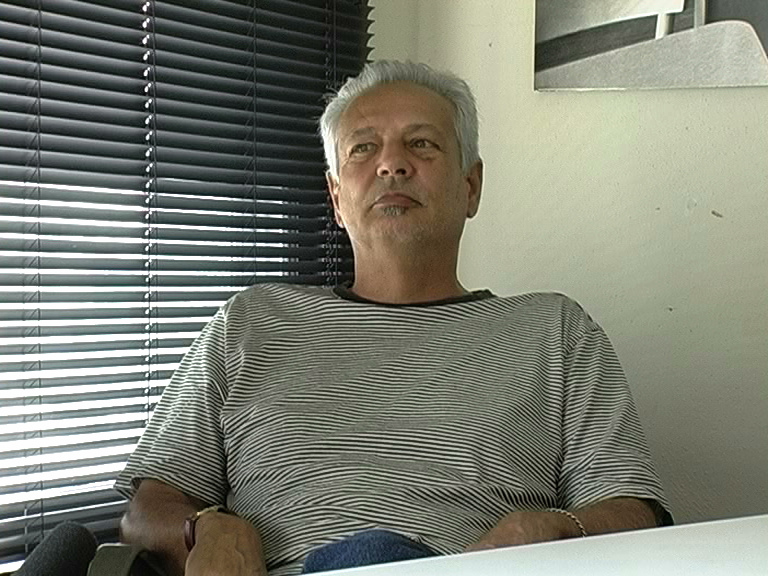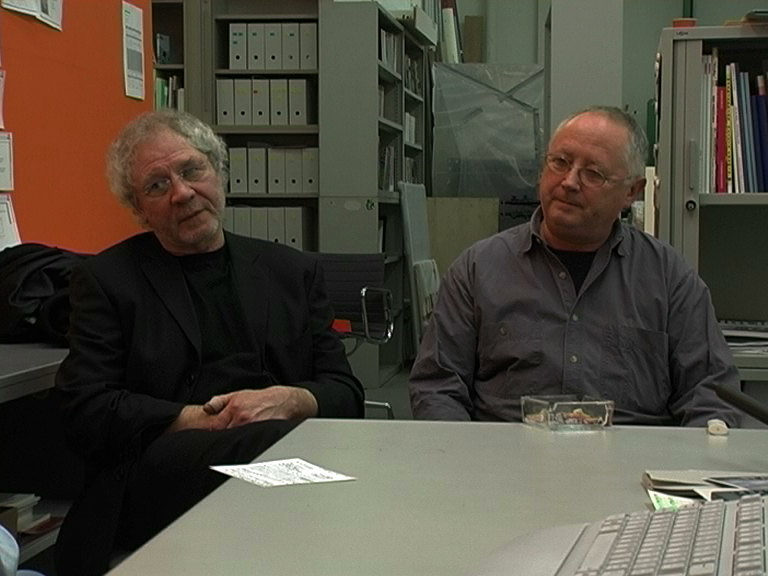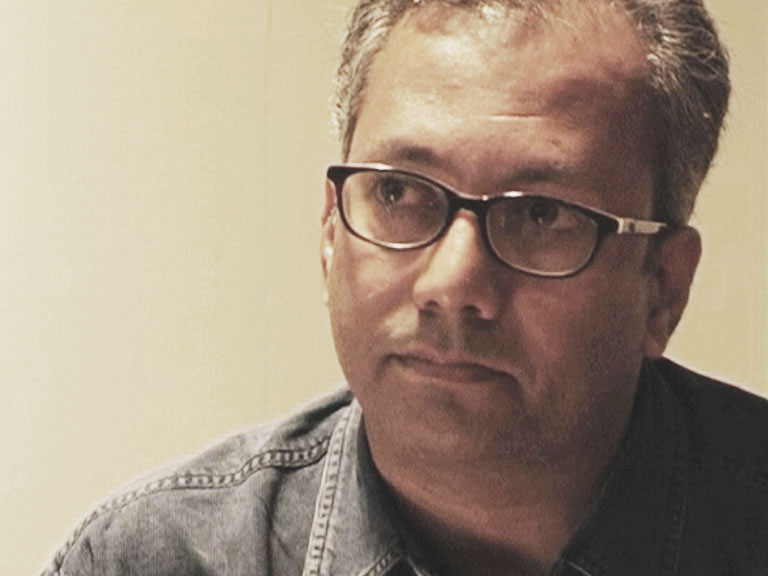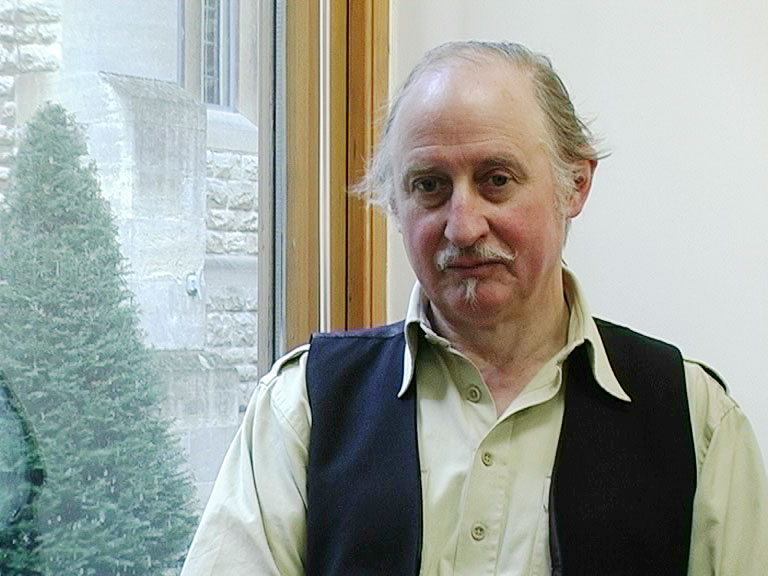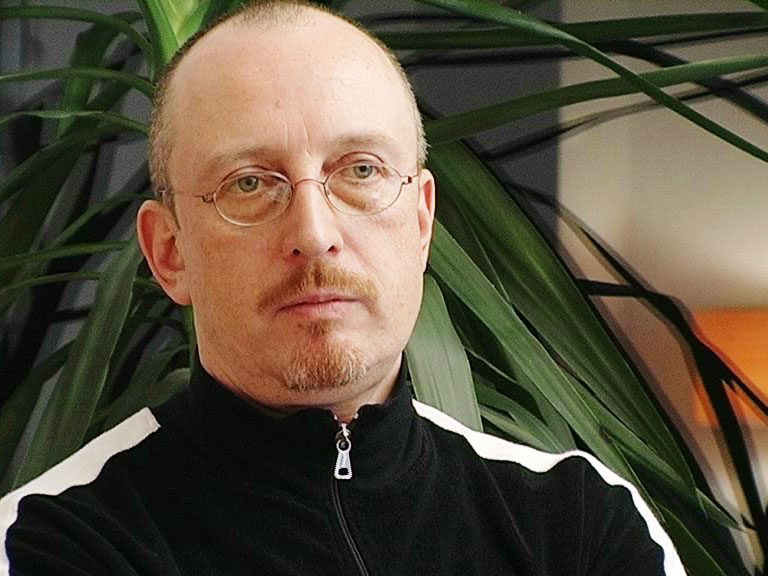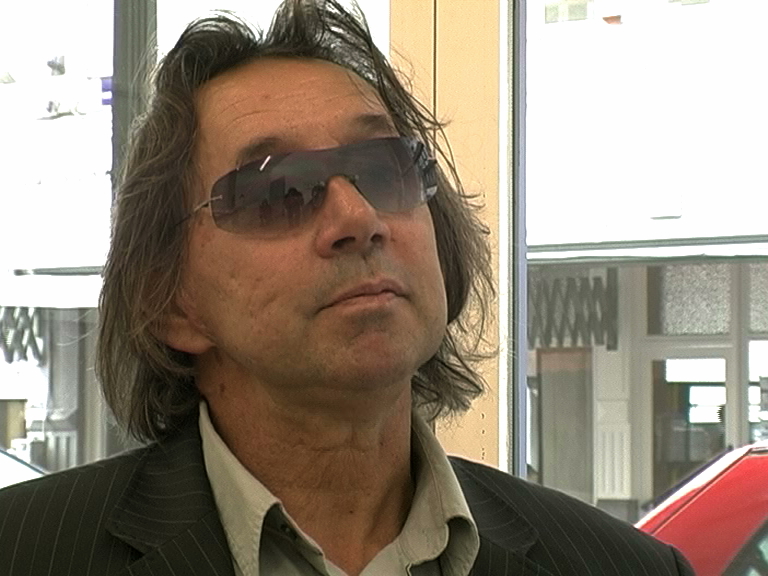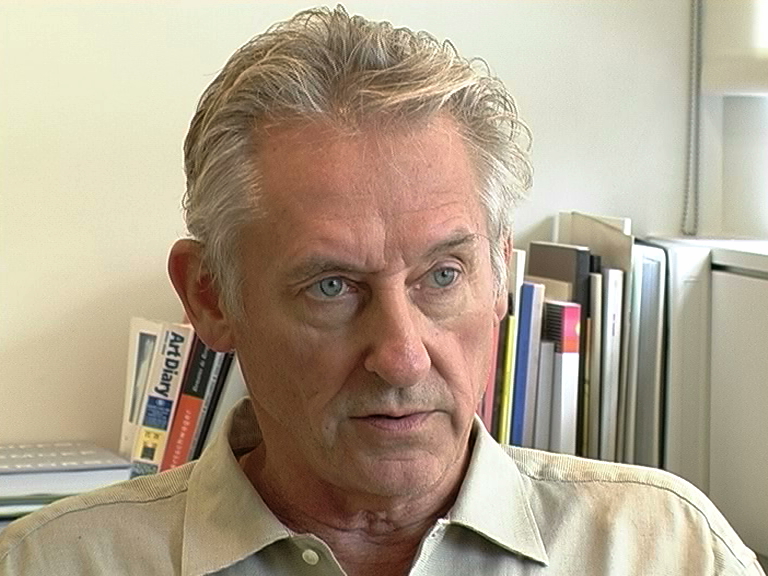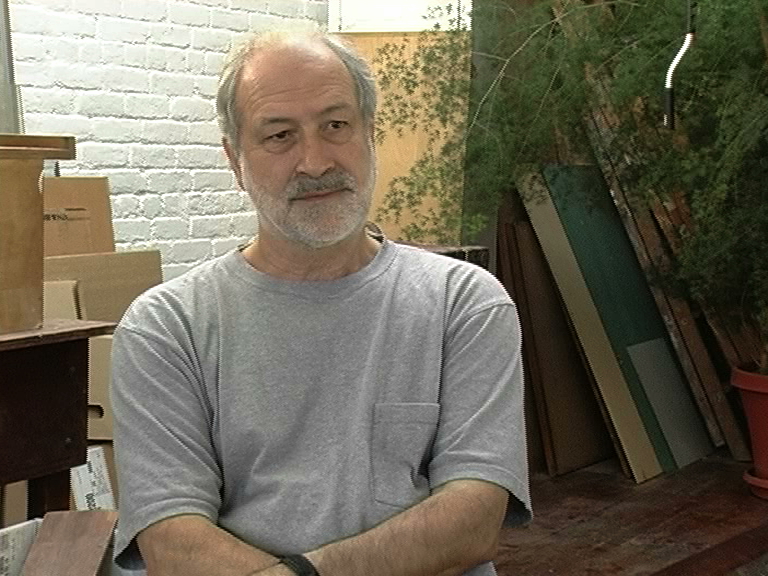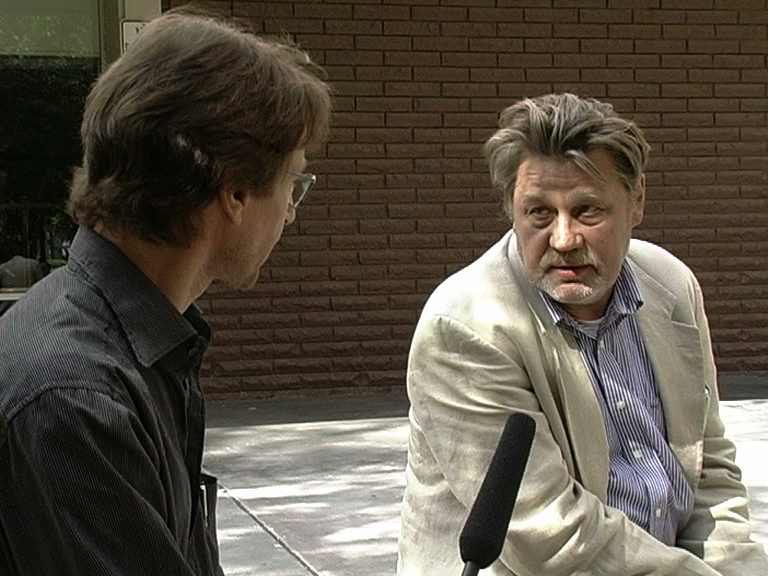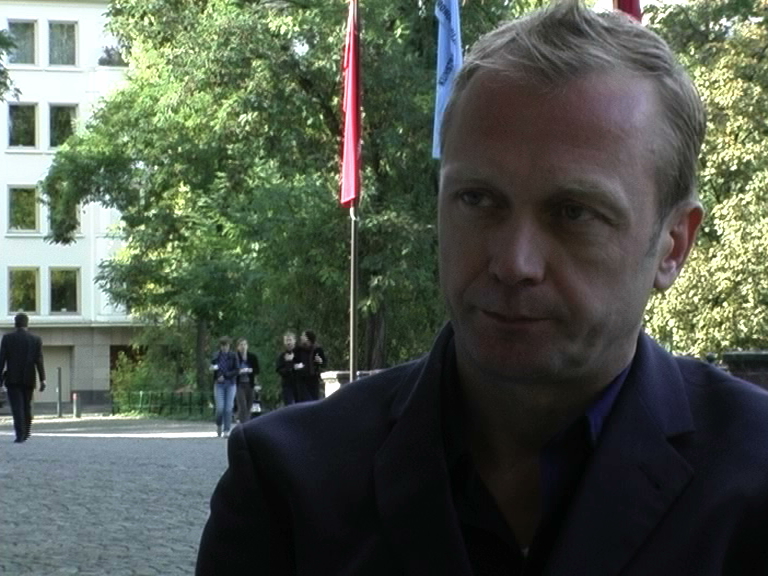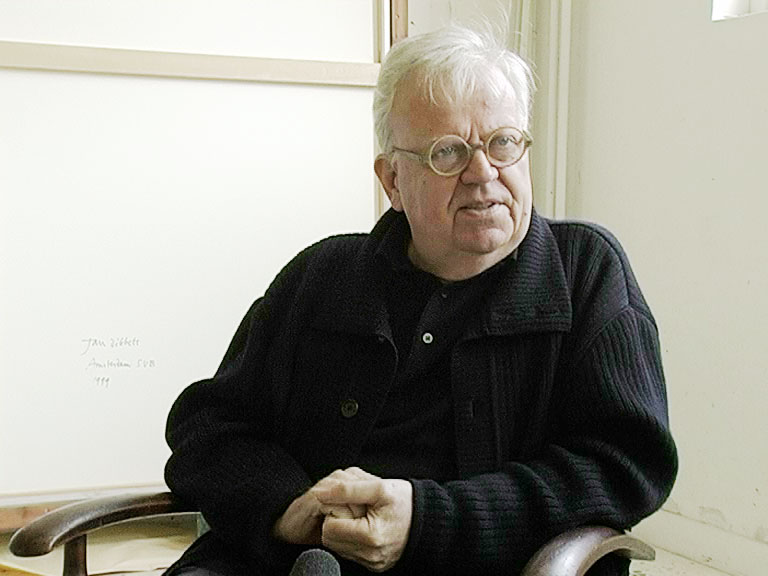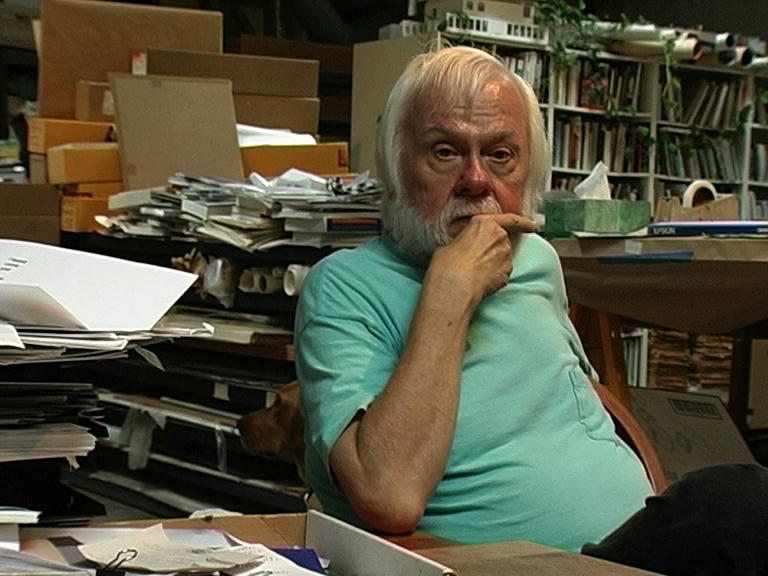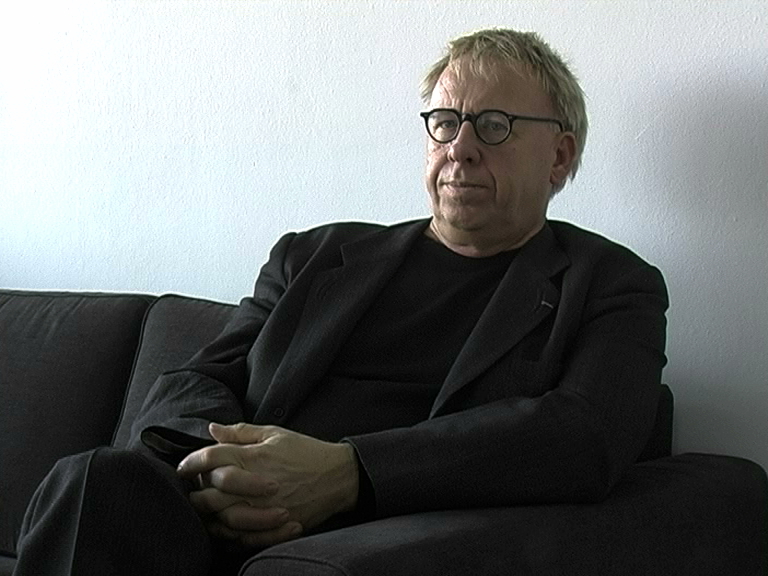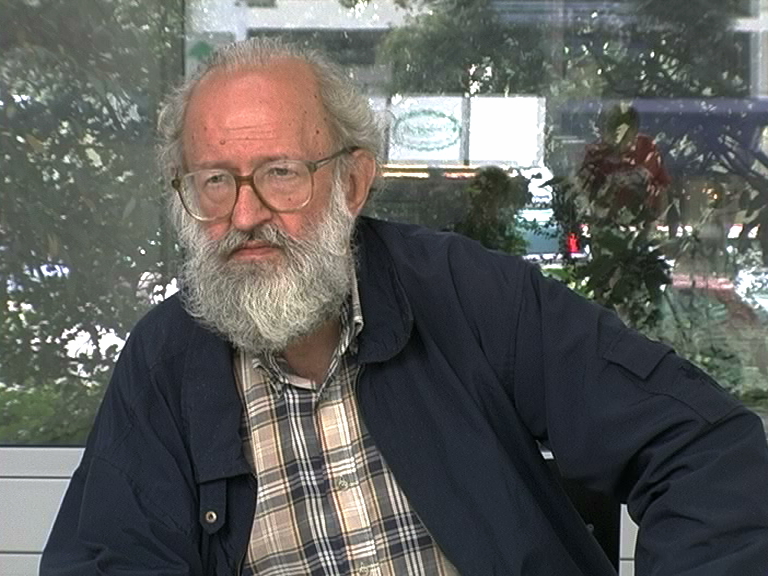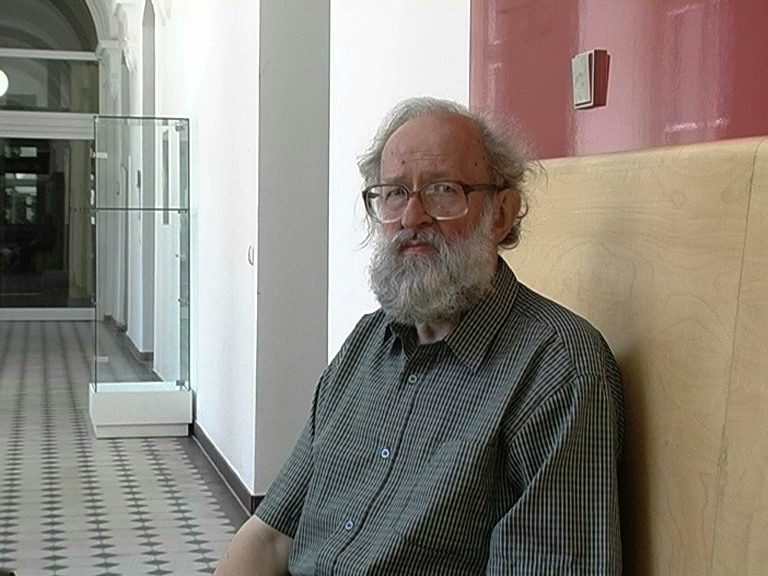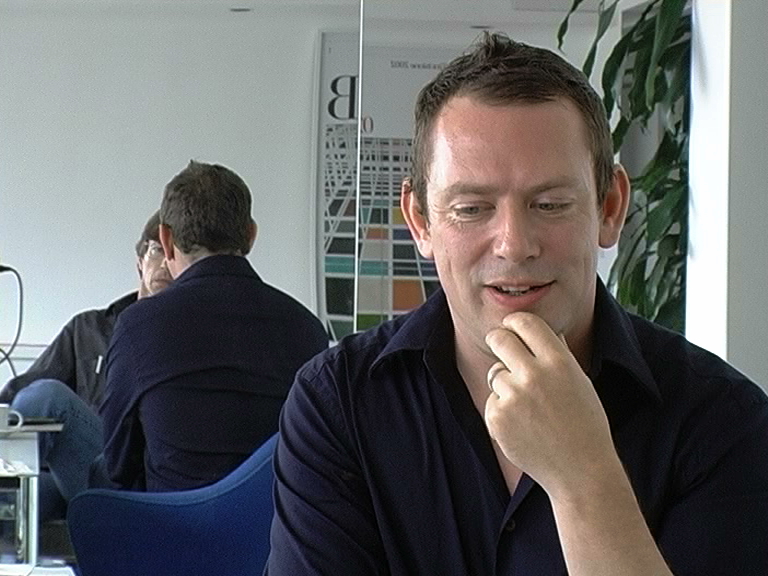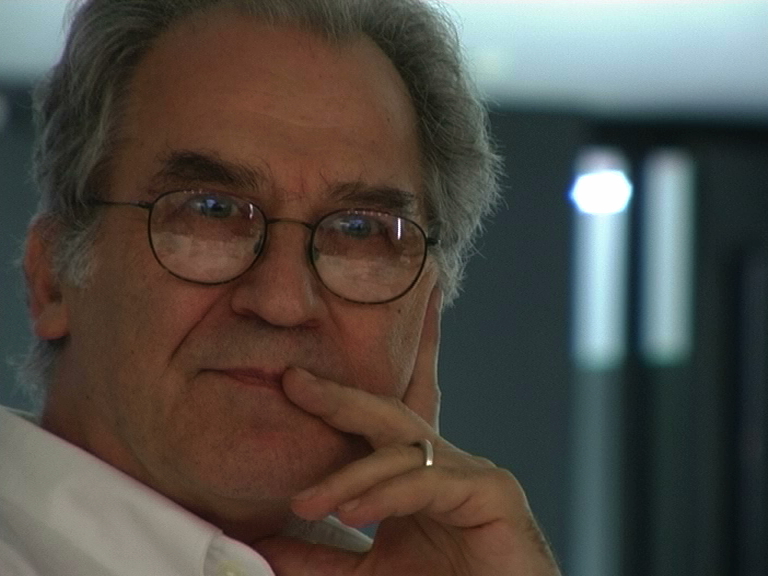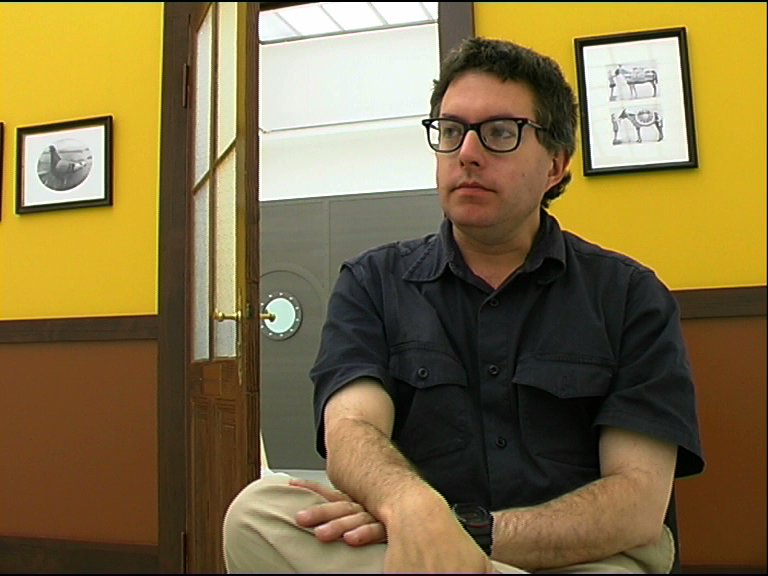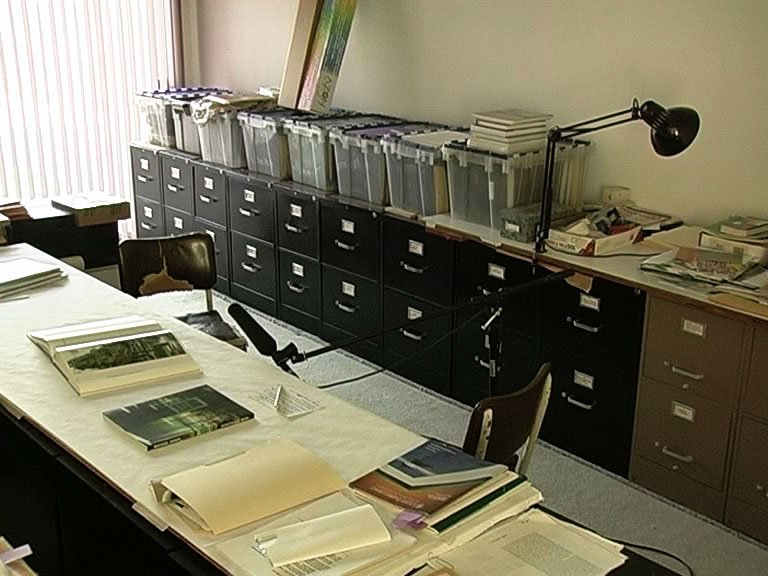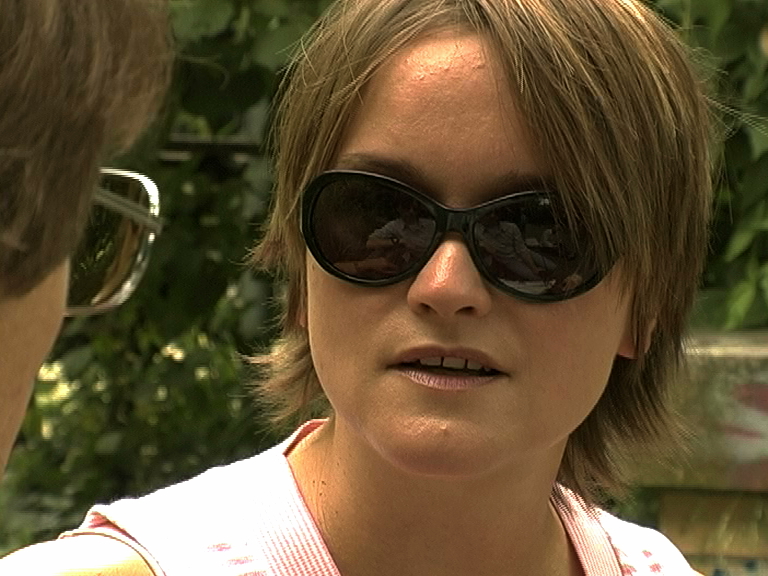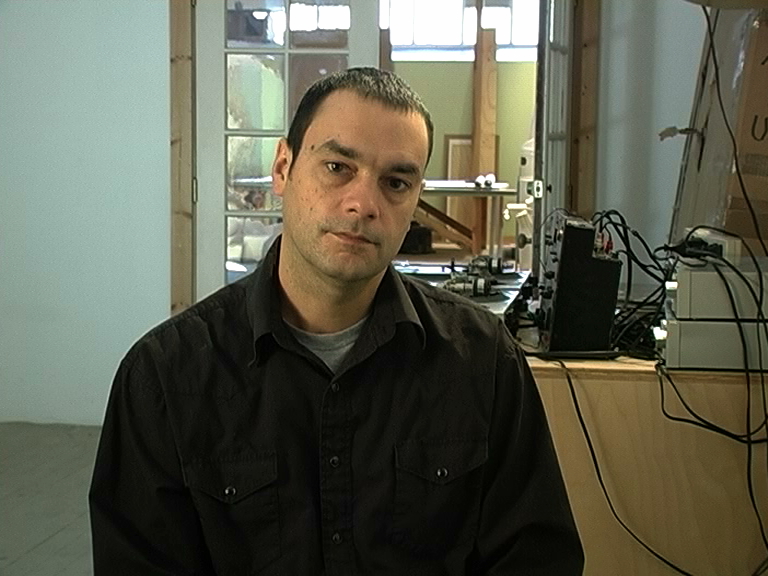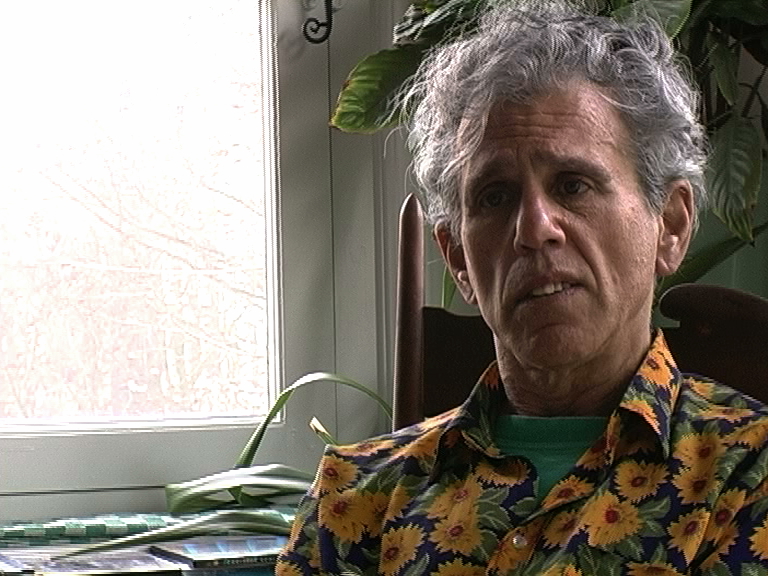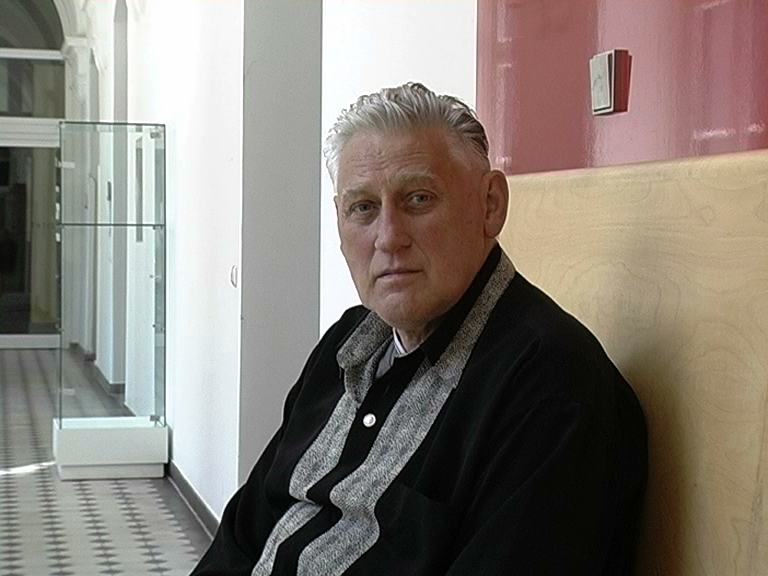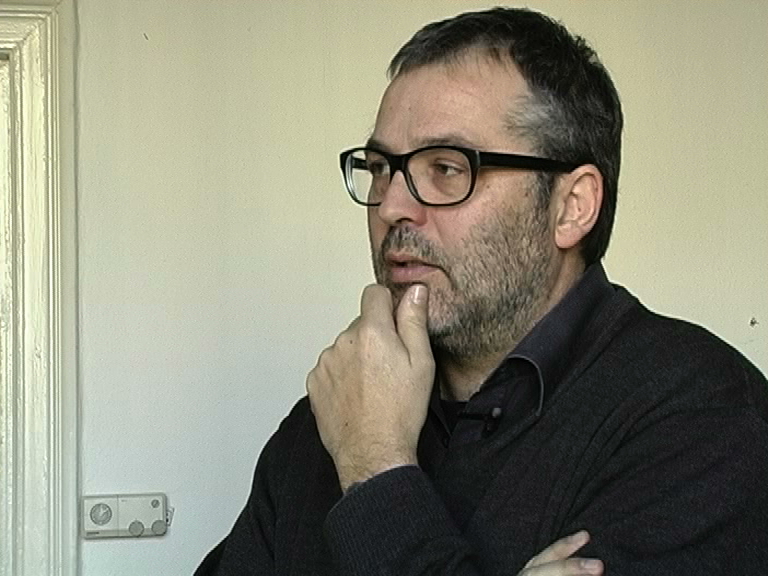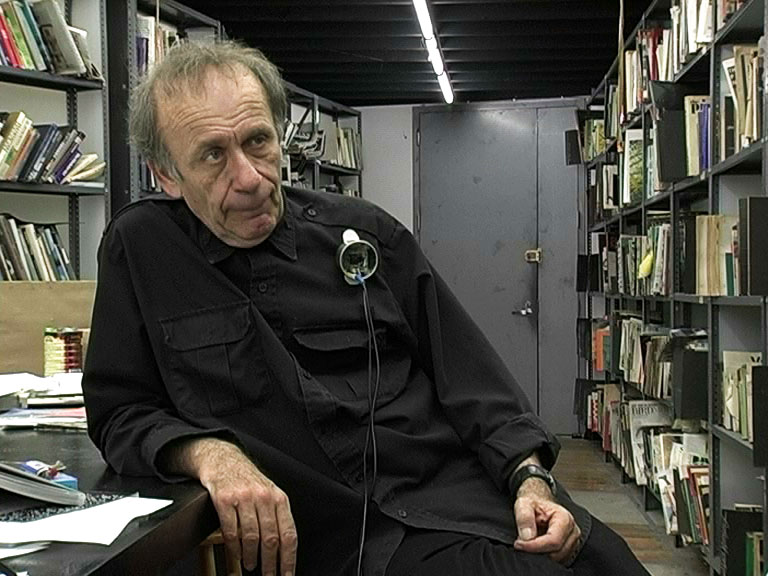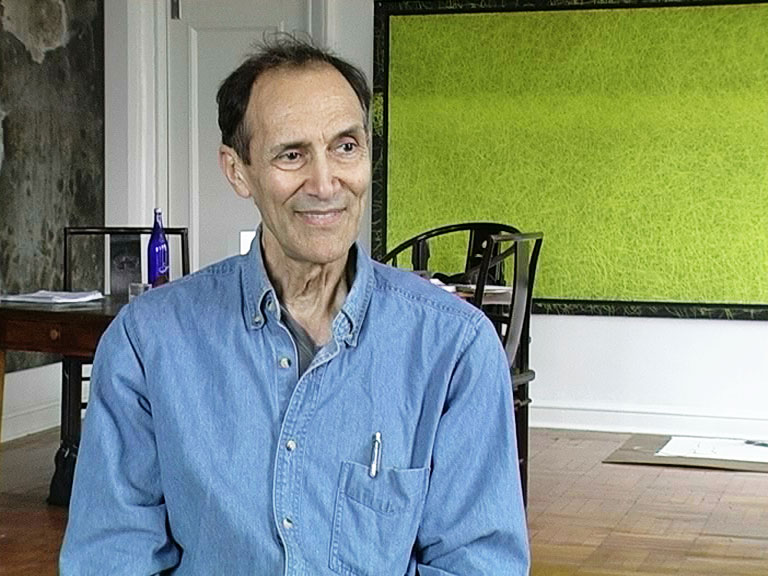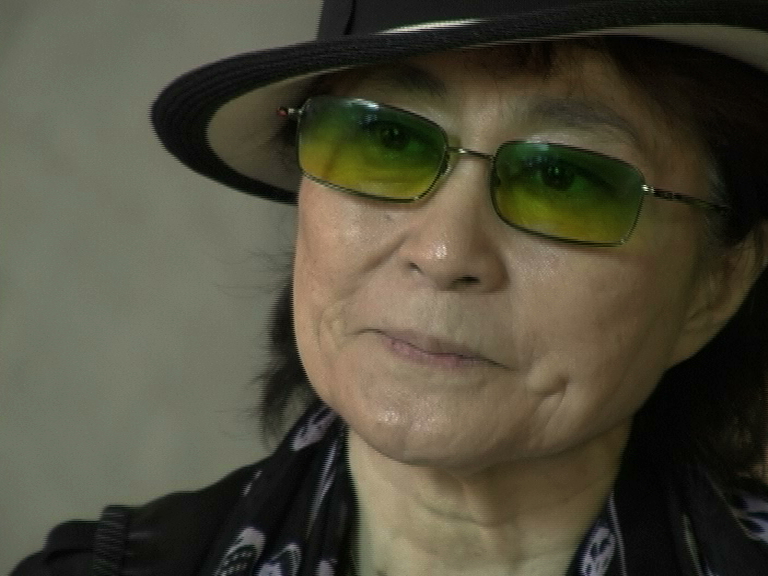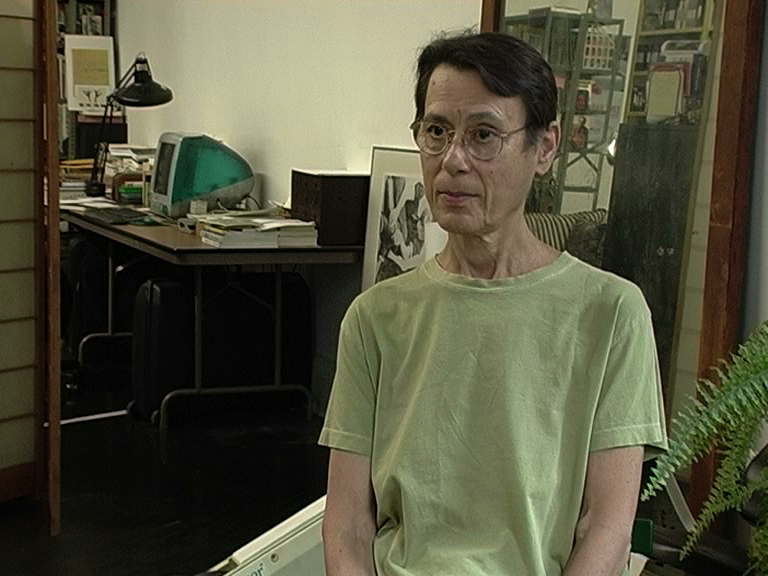S.R.: What was the strongest influence on your work?
R.A. I have to say, my wife at that time––but that would sound trivial, I mean the one who said that I should do it. I think my scientific education, so that I could discover the world of the subjective as a new territory and have a new approach which would… held possibilities of originality which I consciously looked for.
S.R.: Which practice in the history of art is your favorite?
R.A.: I guess da Vinci drawings.
S.R.: Nothing else?
R.A.: Well, you wanted a favourite. There are others: Rubens‘ “Löwenjagd”, the tiger chase. If you have one square centimeter of that painting: Es kocht schon. All right, go ahead.
S.R.: What is the aim of your artistic practice?
R.A.: To, just the selfish part of it would be always to stand somewhere where I didn’t stand before and where maybe nobody stood before, where the view, where the vista is erstmalig.
S.R.: You were talking about originality before , you said, you have to look under a stone? Can you please reconstruct this whole idea?
R.A.: That looking for originality should be simple, should be a preoccupation all the time, should be not afraid of stupid ideas. Es ist eine Entdeckungssache in seiner selber.
S.R.: How would you describe this practice?
R.A.: I just said, you look under rocks, you listen when other people talk. And if you wake up at 3 o’clock in the morning, have a small pencil and paper by the bed.
S.R.: How would you describe your typical daily work as an artist?
R.A.: I would do that if I could name when did I last spend a full day doing it. I try to get going by 9 o’clock, if it gets past that I get demoralized and already discouraged before anything has happened. Ich bin von der Natur aus Faulenzer, und da muss ich achtgeben. Es ist vom Tun und Zufall. Achte, das man tut und achte, dass man den Zufall merkt.
S.R.: But let me come to that point. Because the Formica-thing with what you started very early in the 60s. When you look back––for me from a younger generation––it is very precisely like a fusion of some identical, some material and some formal reflections of the 60s, and you were pretty early with some of these formulations.
R.A.: I didn’t go from generalities. You can go from some, ok. There must be some engagement, there must be some, you must be doing sth., because art is material and then you are dependent on accidents. No accidents, if you stay in the house and don’t open the door, then no accidents and no art, or at least no originality. So on an average day you have some kind of a plan for a day. And it might be just a, generally you know what you are going to do, and then there is sth. specific. Or if you can’t you go for a notebook, I fill 20 or 30 notebooks… Go ahead.
S.R.: How would you describe the references? Are there any references with this para-furniture, you did in the 60s?
R.A.: What kind of furniture?
S.R.: I call it “para-furniture“.
R.A.: “Para-furniture“. I made furniture and so I took what I did in my factory, in my shop, and I made. It required sth. else. I made, well first I made a small box which was of walnut, Nussholz. And I lined the inside of that box with Formica which I had literally a found thing. And I picked that up and it was clear to me that this is a picture of something, it got poetic. As if the wood had passed through the Formica and left a shadow of what it was. And that is the power of the material which is the classic collage material which is pictorial. It’s two-dimensional but you can lean it against a wall, you can make a box out of it, and the revelation has to be complete; you make an enclosure. All right, you make a sculpture which is what you are doing already. So I make a table but I make the table out of pictures of a table which I make of Formica which is collage-material. Formica is a picture of everything; you have a picture of sky, of ground, of wood, marble, velours, anything and you use that to make a sculpture. But it took a stupidity before that which was to take a chest of drawers, ein Holzschrank, und ein Bild vom Schrank machen auf dem Schrank selber. Anstatt auf einer Wand, auf einer Leinwand oder Papier: ein Bild vom Schrank auf dem Schrank, mit Schattierung, you know, with the grain and everything. And I think this really, this opened the door because painting the surface then formica was a wonderful replacement for the surface, and has a power to it that only things have that humans have not made. But machines have made. der bemalte Schrank, das war gut genug, um mir die Richtung zu zeigen.
S.R.: Thank you very much.






